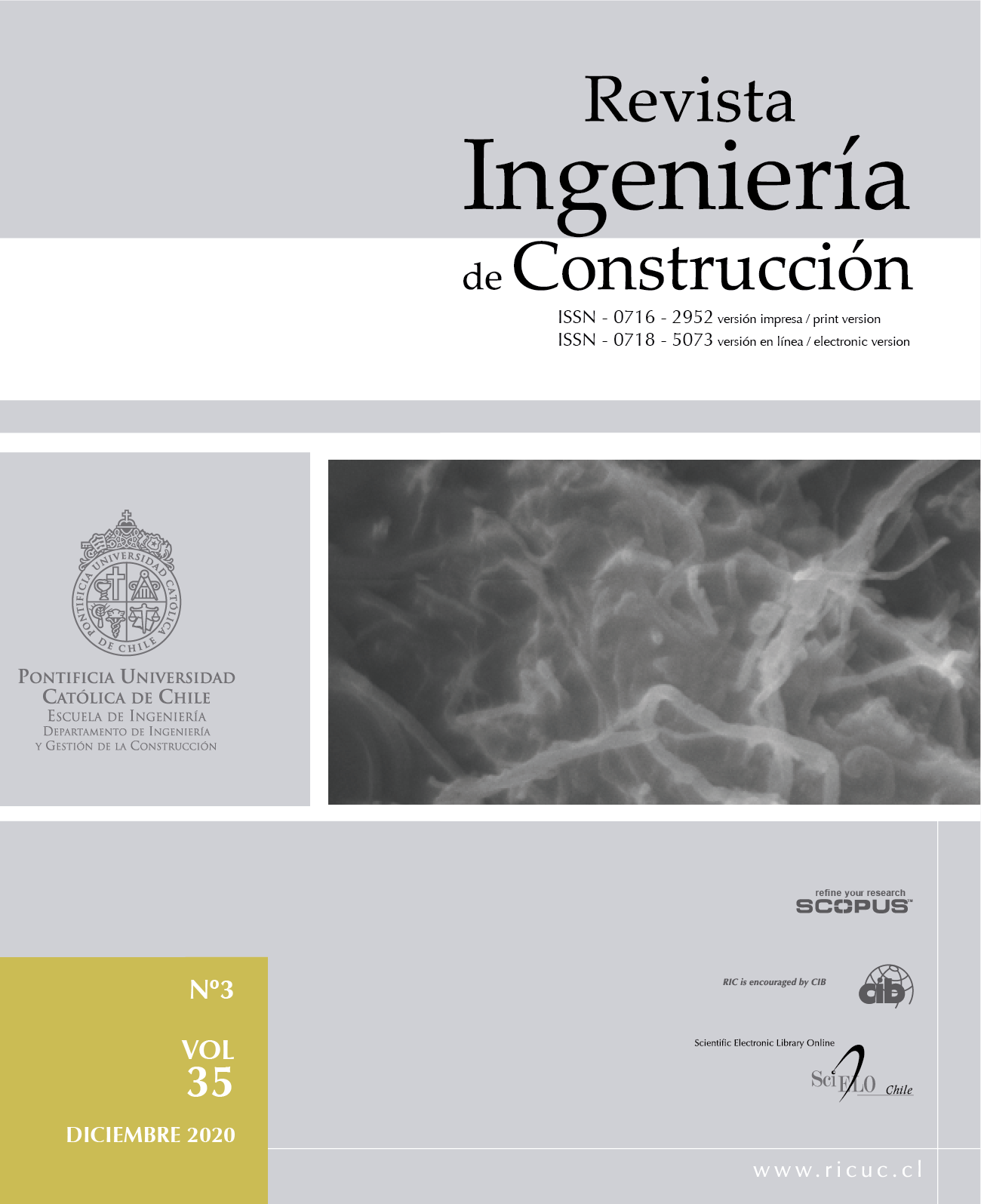Comparative seismic analysis of a torsionally-flexible unsymmetric structure by applying NSP, MPA, NLRHA
DOI:
https://doi.org/10.4067/S0718-50732020000300257Keywords:
Seismic performance, nonlinear analysis, NSP, MPA, NLRHAAbstract
The applicability of nonlinear analysis methods: pushover (NSP) and multimodal pushover (MPA) is verified for torsionally – flexible structures whose natural vibration period is larger than 1sec. The results are confronted with a nonlinear response history analysis (NLRHA). The procedure is applied to an irregular 10-story concrete framed structure, built in the 70’s. A mathematical three-dimensional finite element-based model was developed using material properties based on Mander (1984) concrete model and Park (1975) steel model. Seismic hazard is established for the design basis earthquake with 10% probability of exceedance in 50 years; and, for 3 pair of ground motions properly matched and scaled to DBE. It was determined that for structures with 1sec or more natural vibration period, NSP underestimates the maximum displacement capacity, since it does not consider the contribution of higher vibration modes to the total response of the system. MPA fits more to NLRHA and is mainly applicable to regular framed buildings, since inconsistences are generated when a considerable percentage of torsion occurs in translational vibration modes.


